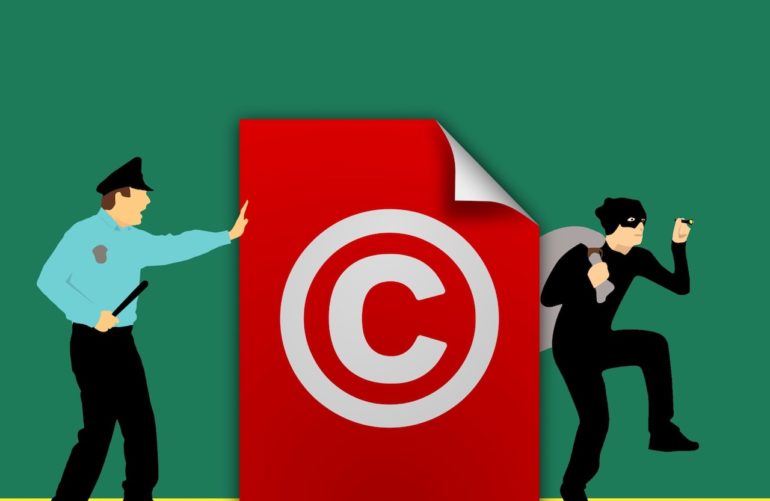As designers and marketers, you constantly create and use intellectual property in your day-to-day work.
Intellectual property may not be at the top of your concerns when starting, but as you scale and build brand reputation, your symbols, designs, logos, and other identifiers become your most valued assets.
So irrespective of what stage you are at in your designing or marketing career, you must understand the basics of intellectual property symbols to best use them as you should.
If intellectual property symbols are a new concept, this guide will give you insight into everything you need to know about them, so keep reading.
What Are Intellectual Property Symbols?
All countries worldwide have laws designed to protect product and service manufacturers, designers, and marketers from people who want to profit from their creations. These laws provide protections such as copyright, trademark, and patents.
While creators may have some right to exclusive use of their creations under common law, the protections may not be as strong as when registered with the respective country’s IP protection offices.
In Canada, registration of IP rights is under the purview of the Canadian Intellectual Property Office (CIPO). There are several options for registering your IP in Canada, the most common being online registration via their website or in-person registration at their physical office.
Upon registration, an applicant receives a registration certificate as proof of ownership of the IP in question. Also, it gives the certificate a legal right to use IP symbols alongside their registered IPs. These symbols are a way of communicating information about the ownership of the IPs used.
Below is a breakdown of the various IP protections and their respective IP symbol.
Copyright Symbol
Copyright is an IP right that covers creative works of art such as music, photo, painting, drawing, architectural design, interior design, or literary work. For a designer, copyright protection is critical in ensuring that your designs are not copied.
The creator of a piece of work owns its copyright by default unless under rare circumstances, such as if they were an employee whose scope of work included creating the piece of art at the time of its creation. Contract employees own the copyright to their creations unless the terms of their contract involve signing off their rights to the work.
However, owning copyrights to a work of art does not give you the right to use the IP symbol alongside your IP. You can only use the copyright © mark after registering your work.
While using the © mark may not prevent everyone from illegally using your copyrighted work, it can act as a deterrent since it communicates ownership of the work.
- On a Mac, press and hold the Option key, then press the G key. Visually, the shortcut is Option+G.
- On a PC, press and hold the Control and Alt keys, then press the C key. Visually, the shortcut is Ctrl+Alt+C.
Trademark IP Symbol
In layperson’s terms, trademarks are brand identifiers that include words, phrases, symbols, logos, or designs. They help consumers pick out a brand’s products or services from its competition. Trademark laws can differ by country, but they all have one thing in common – they run for a limited period which is renewable after paying the service fee. In Canada, trademark rights run for a renewable term of 10 years.
After trademark registration, you can use the ® mark alongside your brand identifiers. The ® symbol is also known as the trademark protection symbol, and like the copyright protection symbol, it cannot assure that nobody will try to profit from your trademarks. However, it will be a deterrent as potential copycats may want to avoid facing trademark infringement lawsuits.
You may likely have come across a ™ symbol and wondered what TM means in regard to IP symbols. This symbol is an acronym for trademark and is used to indicate ownership of a trademark that is not legally registered.
In most cases, it is used on products whose trademark certificates are pending.
- On a Mac, press and hold the Option key, then press the 2 key. Visually, the shortcut is Option+2.
- On a PC, press and hold the Control and Alt keys, then press the T key. Visually, the shortcut is Ctrl+Alt+T.
Patent IP Symbol
A patent is an IP protection granted to an inventor for a certain period, giving them the exclusive right to make, use, or sell the patented invention. An invention must be novel (first in the world), non-obvious, and useful to qualify for a patent.
The patent application process is complex and requires the applicant to give a detailed description of their invention and how it works.
So it is a good idea to work with an IP expert through the process. Upon registration, the patent holder can legally prevent others from using their invention, including suing them for infringement.
Unlike other IP symbols, there isn’t an established typographical symbol to prove that a product is patented.
But the absence of an official symbol is not reason enough not to indicate that a product is patented. If a product is not marked as patented, the infringing party can cite a lack of knowledge of the patent, which can be a legitimate defense for an infringement claim.
If you have registered for a patent but don’t have the certificates, you can indicate “patent pending” on your product packaging as a deterrent for copycats.
Other IP Symbols
The copyright, trademark, and copyright symbols are the most popular, but other marks, such as the service marks ℠, may not be as popular but are equally important.
A service mark ℠ is the equivalent of a trademark but only covers services.
Another not-so-common symbol is the copyleft (ↄ). The copyleft symbol is used in open-source creative works of art. Works of art with the copyleft (ↄ) symbol are free to reproduce without legal ramifications.
Copyleft may not have much significance in the marketing and design industry, but it is still worth understanding if you need to use such work as part of your design or marketing strategy.
There is also phonographic copyright ℗. The phonographic copyright ℗ symbols indicate ownership of a sound recording. Phonographic copyright is somewhat different from copyright to the artistic part of the song in that it covers the musical work owned by the producer.
Like copyleft, phonographic copyrights may not have much significance in marketing and design unless you are in the sound production industry.
Final Words
Copyright symbols can help protect creative works and ensure that your rights as a designer or a business are respected.
Therefore, it is essential to use these symbols properly and to understand their legal protections and limitations, whether you are creating your content or using the work of others.







